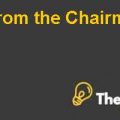Those success factors were regarding holding the right amount of debt and ability to repay on time, but later, the situation was unfavourable to the company’s concern because the new products failed to create the business value. Thus, damaged the company’s operations that were directly proportional to damage the credit chain with the creditors. The main reason for such loss as compared to past performance was the lack of creativity and innovation held by Coleco which made unsuccessful decisions to introduce the new products in the market.
However, there were minor problems in the past because Coleco was managing the business efficiently and had a high creditworthiness with the creditors as well as shareholders. But the recent event was somehow out of control for the company and made such worst case scenario which was directly linked to bankruptcy.
So, under all circumstances, it shows that Coleco was not following the alternative solution in the event of such change. The business model and practice was not executing well and not responding quickly to theimmediate situation. The company could have an option to revise the business model and try to overcome such horrible situation, but the management was not eager to do so. Therefore, it showed alack of managerial ability to respond appropriately. Also, there was a lack of decision-making process in the operational concern.
Coleco Industries, Inc. Harvard Case Solution & Analysis
It is concluded that these two highlighted facts were the major causes for entering into the bankruptcy and not allowing the business to overcome and rebuild on a quick basis unless it could negotiate with the existing creditors in order to restructure the business to cover the massive losses. But that was never the case because these creditors already focused on to collect their wealth to (or “intending to”) minimising the losses.
Financial Analysis of Coleco
Sources and uses of cash
From the following analysis, it seems that the company had the excess cash to retain for business expansion after all the payments were made. The results are indicating the past trends where Coleco had the ability to visualise the business operations and increase the decision-making power to diversify the operational concerns. However, the recent situation was in contrast to it; it shows that the company had no funds to retain or expand the business and considered negative retained earnings to pay off the creditor’s obligations and other business expenditures. The scenario damaged the shareholder’s wealth and not enabling the company to keep the fund’s margin as compared to the past performance.
Analyse the level of Z-score to predict the consequences of Bankruptcy
Under the terms and conditions of bank regulatory, it has been determined that there were some benchmarks or score to retain outside the boundary of bankruptcy. So, the margins according to the regulators indicate that in the recent two years, Coleco was standing in the score of bankruptcy and also showstheinability to come out of the level because the score was very low and difficult to jump into another level. In order toanalyse the probability of bankruptcy, several ratios need to be considered to predict the level of financial health of the company. These ratios indicate the importance in the internal process of control. So, it is concluded that Coleco was far away to the boundary of bankruptcy in 1980-85, but in the recent years, the situation has completely changed.
This is just a sample partial case solution. Please place the order on the website to order your own originally done case solution.











